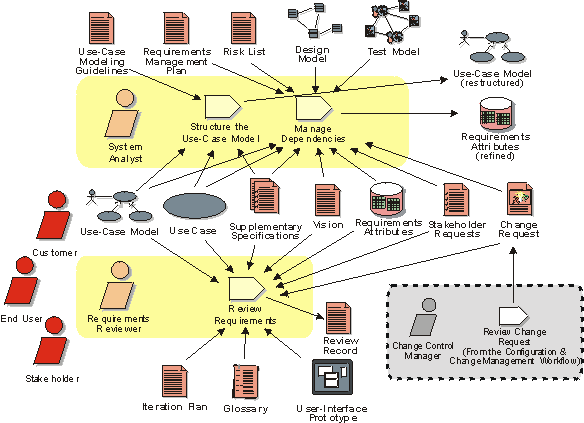Workflow Detail: Manage Changing Requirements
Topics |
 |
Purpose 
The purpose of this workflow detail is to:
- Evaluate formally submitted change requests and determine their impact on the existing requirement set.
- Structure the use-case model.
- Set up appropriate requirements attributes and traceabilities.
- Formally verify that the results of the Requirements workflow conform to the customer's view of the system.
Changes to requirements naturally impact the models produced in the Analysis & Design workflow, as well as the test model created as part of the test workflow and end-user support materials. Traceability relationships between requirements identified in the manage dependency activity of this workflow and other artifacts is the key to understanding these impacts.
Another important concept is the tracking of requirement history. By capturing the nature and rationale of requirements changes, reviewers (in this case the role is played by anyone on the software project team whose work is affected by the change) receive the information needed to respond to the change properly.
How to Staff 
Involve the extended team (stakeholders, customer representatives, domain experts, and others). Be careful to manage your reviewing resources effectively—do not include the entire extended team unless you can ensure it adds value to the project.
The extended team should cover good knowledge of the problem domain, the technical difficulties of the project, as well as skills in requirements management and use-case modeling.
Work Guidelines 
The core development team should conduct a few rounds of internal walkthroughs to clean up unnecessary inconsistencies before their work is more formally inspected and reviewed by the extended team.
You should divide the material up so that the team does not review everything
at once. A review meeting shouldn't take more than a day (for example, conduct
separate reviews of the user interface).